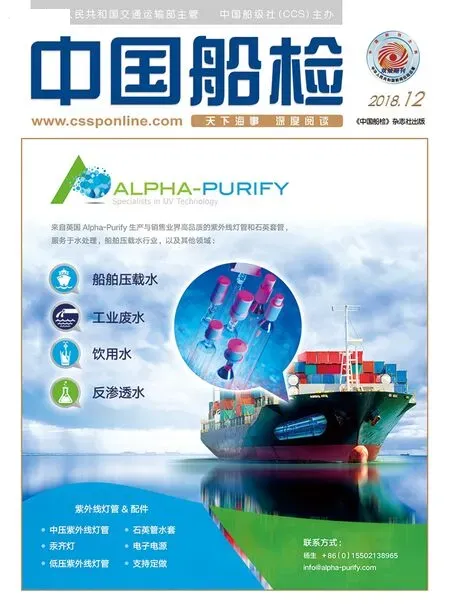The operation of the Norwegian NOX Fund and its inspiration
2019-01-15ByWengYubo
By Weng Yubo

Weng Yubo
Minister of science and technology and supporting department of China shipbuilding industry economy and Market Research Center
Norway has a well-established legal system and advanced environmental science and technology in environmental protection. In 2007, the country introduced a tax on the emissions of NOx(nitrogen oxide) in order to control the emission,and it has achieved remarkable result in reducing NOxemission afterwards with the support of NOxFund and realized the emission reduction target for 2020 under Gothenburg Protocol in 2016 in advance. The NOxFund has achieved a balance between emission reduction and the development of new technology, which is worth learning from.
The NOxFund is mainly divided into three phases:phase 1 is from 2008 to 2010, phase 2 is from 2011 to 2017, and phase 3 is from 2018 to 2025. According to the current plan, the NOx Fund may withdraw from the stage in 2026 after the implementation of phase 3. The companies’ payment rate and the focus of the fund’s support scheme vary in different stages: on the one hand,NOx emission tax is increasing; on the other hand, the marginal cost of NOxreduction per kg is also rising.The NOxFund is running well by supporting individual projects with a maximum 80% of the investment cost.
On 24 May 2017, fi fteen business organizations and the Norwegian Ministry of the Environment signed The NOxAgreement 2018-2025, which is the planning of phase 3 of the fund. Meanwhile, the payment rate to the fund is climbing year by year, so as to increase the required cash flow pushed up by the rising cost and target. The high rate and low rate in 2018 are 12 and 6 NOK/kg respectively, which are predicted to reach 14.5 and 8.5 NOK/kg respectively in 2019, and 15 and 10 NOK/kg between 2020 and 2025. The NOxFund is expected to exit from 2026, and companies will have to pay emission tax to the government in accordance with the volume of NOxemissions after that.
The NOxFund’s income is mainly the fee paid by enterprises. Payments are per kg taxable NOxemitted multiplied with the payment rate. During the period from 2008 to 2017, affiliated enterprises paid a total of 6.44 billion NOK to the NOxFund, and all the income were used to support NOxreduction measures. In 2017, the income dropped by 10.9% compared with 2014 when it reached a record high of 690 million NOK. As the emissions from the oil and gas industry account for 40%-50% of the total taxable NOxemissions and it is charged a high payment rate, the fee paid by the industry accounts for almost 70% of the total income of the NOxFund,making it the largest source of taxable NOx. In addition,the shipping industry also has high NOxemissions.
The focus of the NOxFund’s support scheme is on the application of emission reduction related technologies,and the project is directly linked to NOxreduction.Besides, the fund also supports NOxemission monitoring on mobile devices and research & development of NOxreducing technologies.
Since the launch of the NOxFund, it has made signi fi cant achievements in reducing NOxemission, and triggered the business development of the relevant retrofit and technology service companies by funding shipowners/businesses.
Firstly, sharply reduce NOX emissions
According to the verification of DNV GL in 2017,the 934 projects financed by the NOxFund have accumulatively reduced NOxemissions by 35,800 tons between 2008 and 2017. The remaining 146 projects are scheduled to be completed between 2018 and 2020. After the completion of all the projects, 40,000-50,000 tons of NOxare expected to be reduced annually,accounting for approximately 1/3 of the current 149,000 tons of emissions. Meanwhile, the implementation of these projects also contributes to an annual reduction of 400,000 tons of CO2emissions, representing 0.8% of the total CO2emissions in Norway.
As for the main sectors of emission reduction, the shipping industry accounts for 55% of the total reduction, followed by the fishery industry. Among all the ship types, offshore vessels contribute the most to the reduction of shipping emission with 60%, followed by ferries with 15%.
From a national perspective, Norway’s NOx emissions in 2017 declined respectively by 4.5% and 24.4% compared with 2016 and 1990. Other emissions, such as SO2and Non-Methane Volatile Organic Compounds, were sharply reduced as well. According to the amended Gothenburg Protocol, the national NOxemissions in Norway shall not exceed 156,000 tons by 2020, which means that Norway has realized the goal ahead of schedule in 2016 (153,000 tons).
Secondly, promote the development and application of new technologies
While providing support for all the projects, the NOxFund also facilitates the business and technical development of enterprises related to NOxreduction. The fund has since 2008 brought over 14 billion NOK of revenue to the industry, promoting the development of new technologies and their competitiveness in international market. Norway has built numerous benchmarking low-emission and zeroemission vessels, and become the world-leading country in battery power, LNG power and other technologies at present. According to statistics, the number of allelectric ships put into operation in Norway will reach 18 by the end of this year, which will jump to 60 by 2021.The increase in the number is closely related to the NOxemission tax and the NOxFund.
